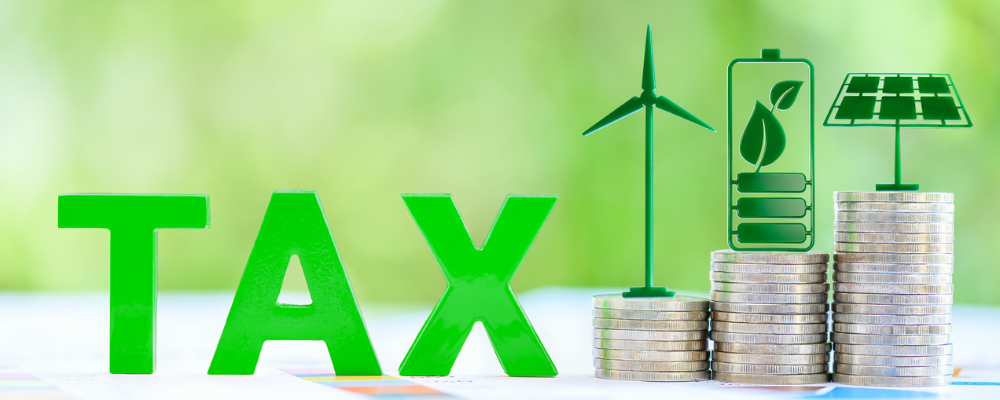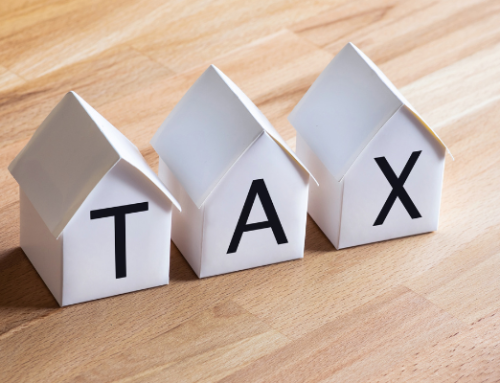By Ryan Paul, CPA
By Ryan B. Paul, CPA
Sustainable building practices are becoming less of a trend and more commonly included into new and renovated real estate. Building owners, tenants, and investors increasingly demand green materials and building systems. Certain tax incentives provide opportunities to reduce project costs and reward building owners for investing in innovative, sustainable technologies.
The Section 48 Investment Tax Credit (ITC) is one of these incentives. It was recently updated and expanded as part of the Inflation Reduction Act (IRA) to lower the cost of installing and operating renewable energy projects (wind, solar and hydropower equipment).
Renewable Energy Incentives Added to Inflation Reduction Act
Section 48 was originally introduced in 2006 as the Solar Investment Tax Credit. It was extended and modified several times until the IRA added several new provisions in 2022. Prior to the IRA adjustments, the tax credit was worth a maximum credit of 26 percent (2020-2022) of the basis of each energy property placed in service during the taxable year which dropped to 22% in 2023 and 10% in 2024 and beyond. It applied only to projects installed as part of a new solar generation facility. Post-IRA, the base credit is lower and standalone renewable energy projects can qualify.
Even though the base credit has been reduced (6%), there are several benefits that could make the credit more powerful for eligible taxpayers. Different versions of the credit are available depending on when construction begins or when the facility is placed in service.
- Projects placed in service after December 31, 2022 and also begin construction before January 1, 2025: Can still claim the existing ITC under Section 48(a)
- Projects that begin construction after December 31, 2024: Credits available under the newly created Section 48(e)
The focus of this article is on the newly created Section 48(e) ITC. Note that projects that would have qualified under Section 48(a) will still qualify under the new credit, too.
Section 48(e)’s maximum credit value extends through at least 2033, when it begins to phase out.
Not-for-profit entities and governmental entities can claim a refundable version of the tax credit with similar rules to qualify. For-profit project owners can elect to monetize the credit to another entity under new transferability rules. There are considerations to factor in and a tax advisor should be involved in the planning.
In 2023, the base credit is six percent. It can go as high as 30 percent for projects that meet wage and apprenticeship requirements outlined in the IRA or for facilities generating less than one megawatt of renewable energy. Additional stackable bonus credits, described below, can increase the credit’s value substantially.
Careful planning would be required to meet every requirement of all the bonus credits, however. There are limited exemptions to the prevailing wage and apprenticeship requirements.
Sec. 48(e) Bonus Credits
There are different ways to qualify for bonus credits with Section 48.
- Domestic materials (steel, iron, or other manufactured product) bonus: 10 percent
- Energy Community (brownfield area) bonus: 10 percent
- Low-income communities and Indian land bonus: 20 percent
- Affordable housing and economic benefit projects bonus: 20 percent
Another option is to site a qualified renewable energy project in a low-income community. The Low-Income Communities Bonus Credit is a 10 or 20 percent bonus depending on which category the project is in, as noted below.
- 10 percent bonus credit: facilities located in designated low-income communities (A) or on Indian land (B)
- 20 percent bonus credit: qualified low-income residential building project (C) or a qualified low-income economic benefit project (D)
The Bonus Credit applies to smaller solar or wind projects that produce up to five megawatts of alternative current. The bonus credit is allocated according to the facility’s capacity and is limited to 1.8 gigawatts of direct current in 2023 and 2024, and zero gigawatts after that. If there are excess gigawatts not allocated in 2024, they may be carried over to 2025.
Categories A and D can allocate more gigawatts to a project than Categories B and C. If a project could be eligible for both a Category A and Category C, for example, the higher credit amount would be used.
Projects must apply for the bonus credit; the application with the Department of Energy is expected to open later in 2023.
Certain projects may carry more weight in the application process. Projects that are market-ready, owned by a community organization, “encourage new market participants,” and benefit low-income and marginalized communities may receive more emphasis.
Considerations for Clients
There are exceptions to Section 48 eligibility and clients should discuss their plans with their PBMares tax advisor. Real estate owners or investors who plan to apply for the bonus credit may want to begin exploring the guidelines and requirements of the program now. Clients may also want to look at the new requirements for another energy efficiency tax incentive in the IRA, the Section 179 deduction, to see how their projects might benefit.
To learn more, reach out to Construction and Real Estate Partner Ryan Paul, CPA.





